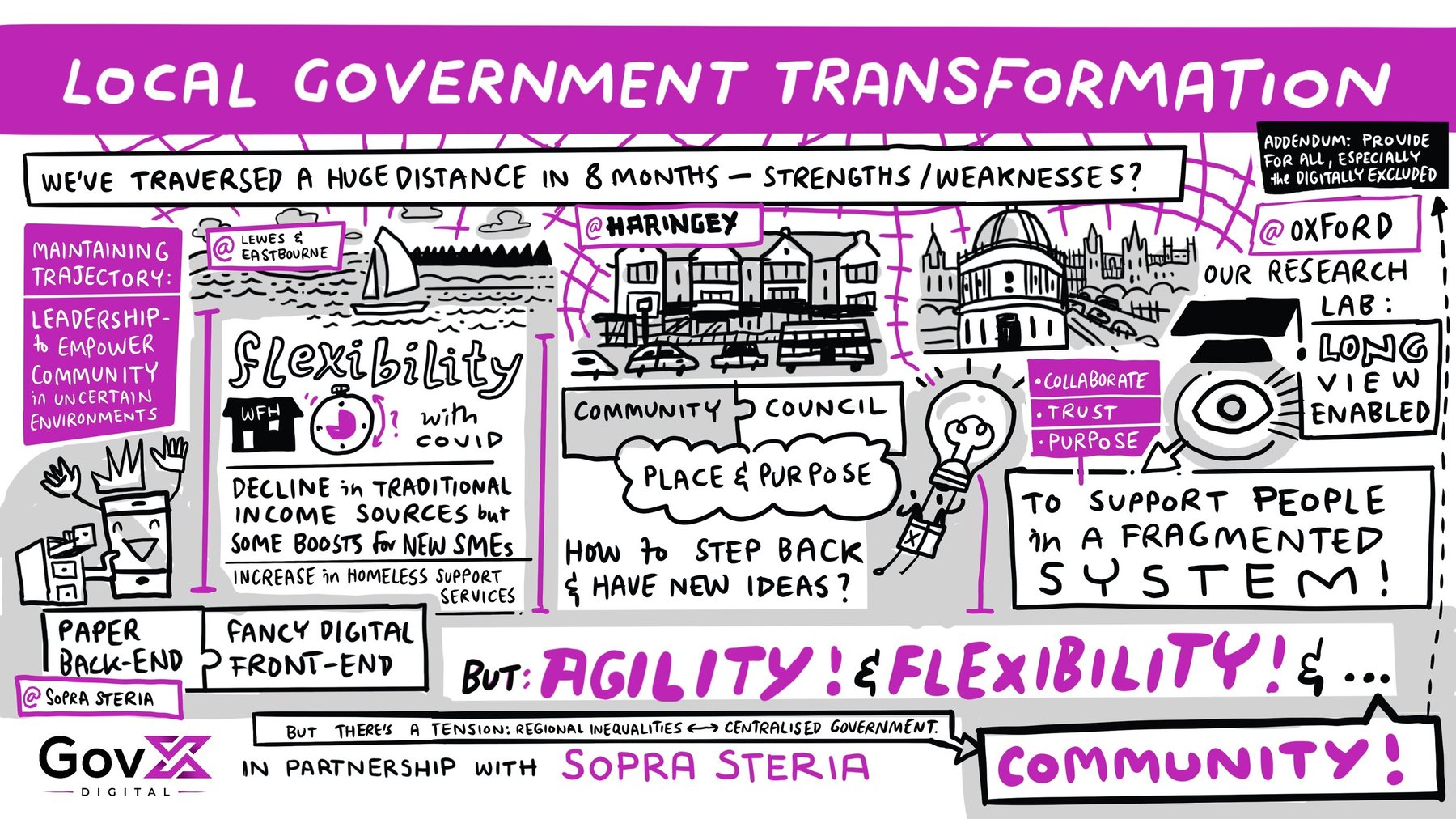How to transform local government for the post-Covid era
Councils have rapidly accelerated transformation programmes during the pandemic, but how do we ensure local government builds on these new ways of working to succeed in the future? These are the key takeaways from the panel of local government change makers who joined us at GovX Digital 2020 for the session ‘Local Government Transformation’.

Richard Grice - Director of Customer, Transformation & Resources, London Borough of Haringey
Over the last few months, the big strength that was built on in Haringey is the extent to which the council feels like part of the community and the community feels like part of the council - as exemplified by the large proportion of our staff (about 75%) who live within six miles of head office, which is unusual for a London borough.
That sense of community and commitment to place are really the things that our success has been driven on. We’ve been successful in the way we've met the challenges of Covid and proved that, beyond technology or leadership, it's about purpose and cohering around the purpose.
That equally can be a challenge in that having time to stick your head up and look for ideas and what's happening elsewhere has been really challenging in the last nine months, because everyone has been nose to the grindstone. But what’s been really transformational. is the extent to which we've been able to release the way the organisation works.
We've all been talking about Agile with a capital A and implementing that for a long period of time. Well, this was agile with a small a, just because it had to be. We brought together multidisciplinary teams with a task and a purpose, and they tested and they learned as they went along. That's been fantastic in taking us forward as an organisation.
Tim Whelan - Director of Service Delivery, Lewes & Eastbourne Councils
My first reflection is on the flexibility and versatility of our staff. They responded in a magnificent way- we already had agile working, but we moved to working from home, straightaway we changed our working hours to six in the morning to 10 at night on back office systems so people had that support around, especially with the schools being closed. Actually, my KPIs were better in Q1 and Q2 of 2020 than they were in any other years, so it really shows how that flexibility of work can really have an impact on performance.
We're reliant on a lot of income from tourism, income from car parks. That’s where our challenges have been caused by Covid and where we’ll need to leverage further transformational change to make up that funding.
What's really been transformational for me has been working with a Connected Places Catapult through which we've been working with a number of SMEs and that has been our most transformational process. For the business grants we had to administer, we worked with an SME in Sheffield, a company of four people, and together we were able to build a portal that businesses could apply through online, which meant we administered £40 million of grant money within three weeks. We think that was the equivalent of around 25 FTEs.
We're also working with a second SME on digital robotic processing of housing benefits. That's what's been really transformational - we opened ourselves up as an organisation to SMEs that can really assist in driving those efficiencies.
Nigel Ball - Executive Director, Government Outcomes Lab, Blavatnik School of Government, University of Oxford
When we look at commissioning and contracting in local government, that willingness to move fast and potentially circumvent some of the usual sorts of decision-making processes was imperative when Covid first hit, but it seems to have been really welcomed. There seems to be a real appetite to carry on working in that more agile sort of way.
That's an acceleration of a change that was happening anyway - some of the most forward-thinking local authorities in the country were already recognising that the processes and silos in our systems were not fit for purpose anymore. We're trying to find ways to break down some of those barriers and collaborate more across parts of the public sector, and indeed, with civil society and private sector suppliers as well.
But I think there's also a note of caution around this, and, the NAO has published a report into the emergency procurement that happened at the start of lockdown. There is a downside to working in this way, which is that those procedures were put in place for a reason. It may be that they have become very encumbering and, and indeed, they have, but, but they're not useless. So we shouldn't completely turn them out.
We haven't quite worked out which bits of the old processes we need to hang on to, and which we need to change. That's now the reflection that's needed on all of this very different practice that we've seen over the past months.
Becky Davis - Head of Customer & Organisation Transformation, Sopra Steria
We've seen some common challenges around the practicalities of delivering services on a day-to-day basis. From a customer perspective, it can feel digital when they engage and request services online, but what's happening behind the scenes is a paper-driven process, or they can't access a particular office-based system because staff don't have access to it at home. So a lot of the challenges that local government have been talking to me about is how do they just organise for their staff to be able to work effectively from home.
From a customer perspective, digital take-up and self service have obviously been hugely exaggerated as a result of Covid. But there’s a challenge around those that don't want to digitally engage and being unable to free up capacity within councils to create different ways of communicating and providing interventions.
A focus for local authorities will be how they move from just surviving to understanding what they need to do on a day-to-day basis to thrive within this new environment. I think it will be by reassessing the internal ways of working, the internal decision-making, and how they create a fully enabled flexible workforce.





